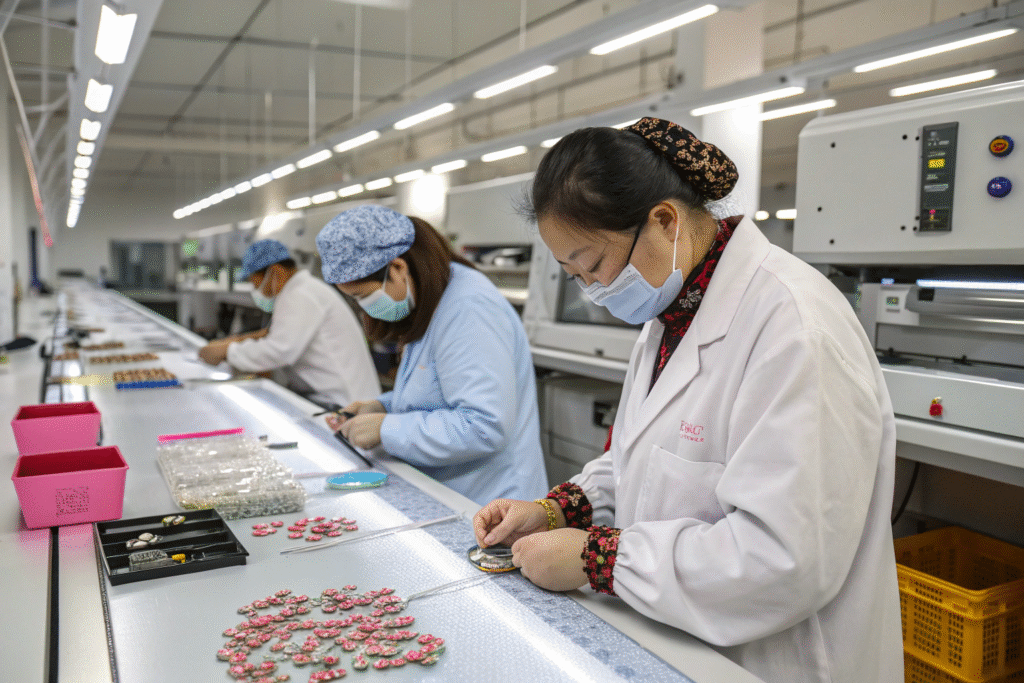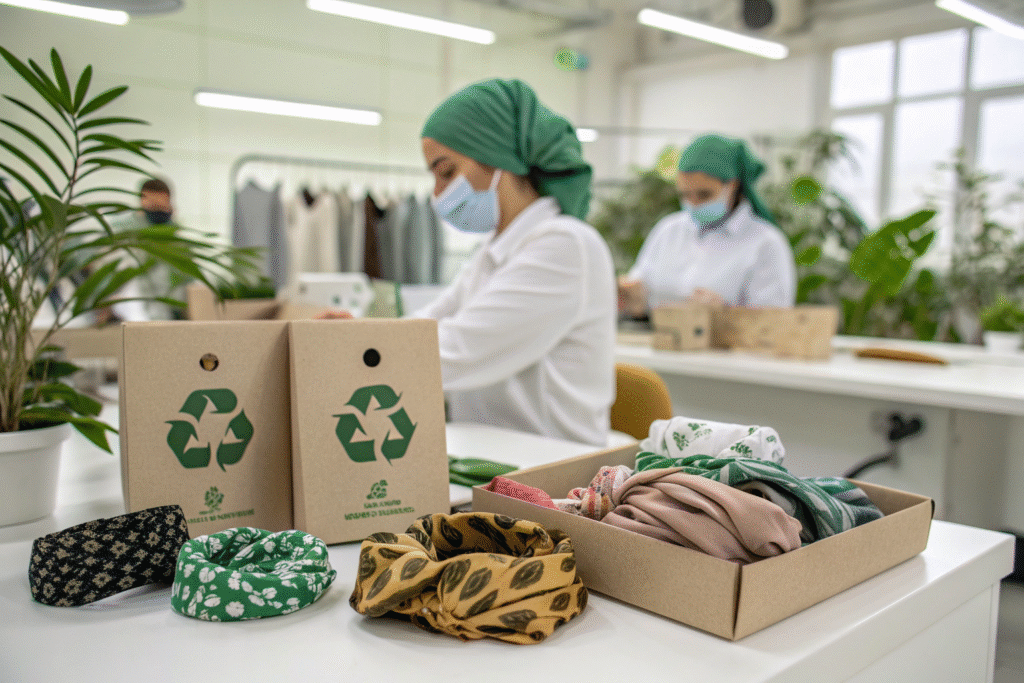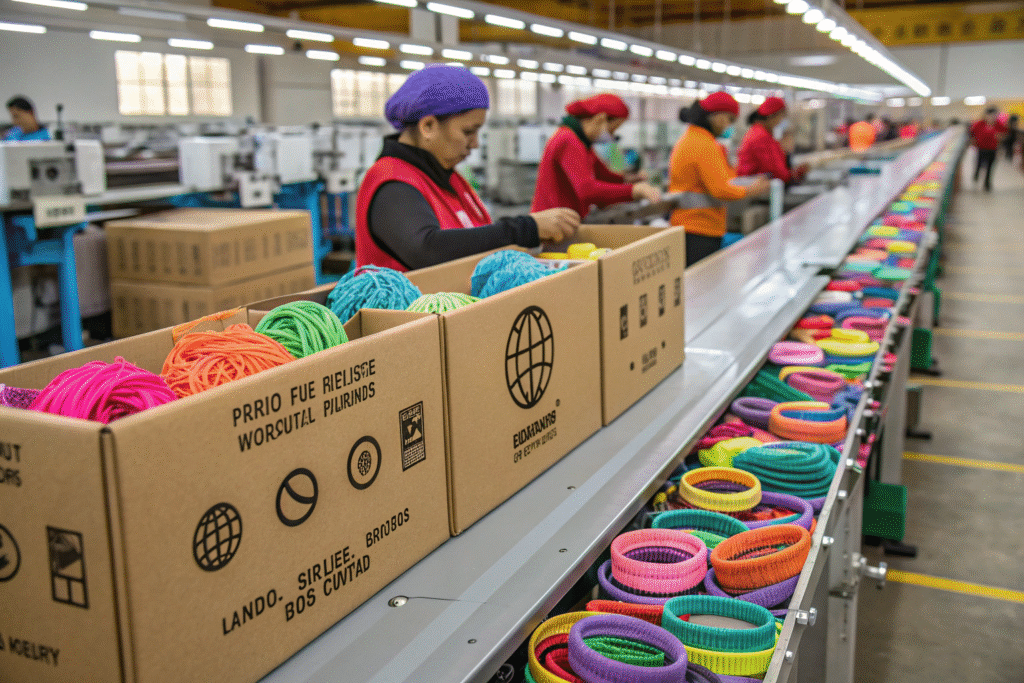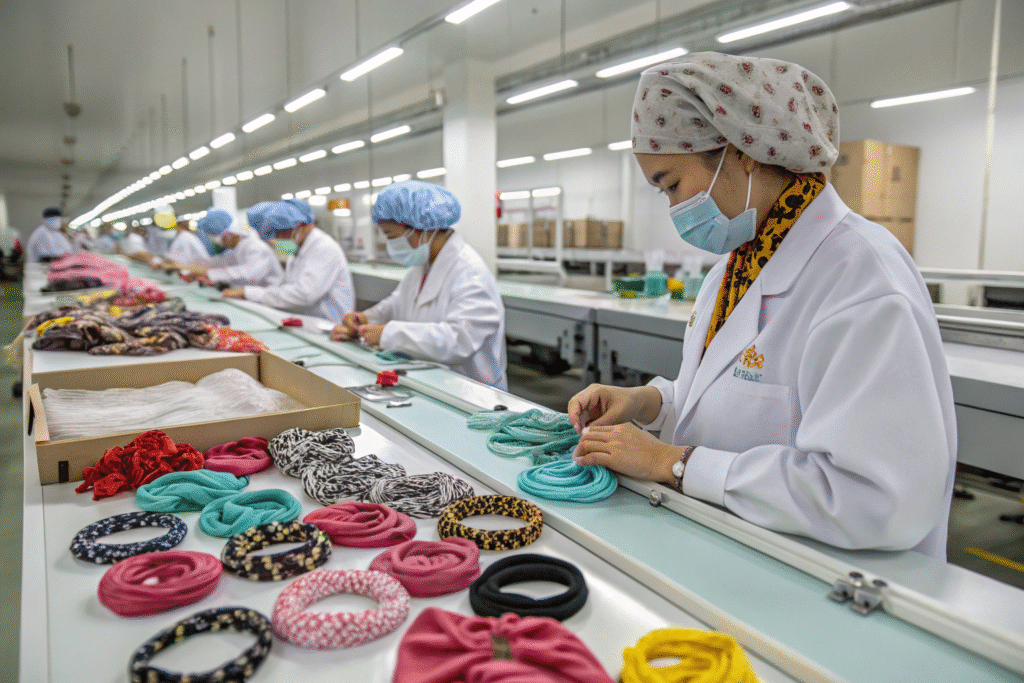When fashion buyers or sourcing managers look for reliable hair accessory suppliers, they often focus only on the upfront factors: product design, cost, and delivery time. However, overlooking the full product lifecycle can lead to hidden costs, inconsistent quality, and customer dissatisfaction. This is where lifecycle analysis becomes a key differentiator in choosing the right factory partner.
Factories that provide hair accessory lifecycle analysis give buyers a complete picture of product durability, sustainability, and market readiness. This approach ensures every stage—from material sourcing and production to end-use performance and recycling—is optimized for quality, cost-efficiency, and customer satisfaction.
By understanding the lifecycle of a hair accessory, buyers not only reduce risks but also strengthen their supply chain resilience. Let’s explore why partnering with such factories is crucial for long-term success.
How Does Lifecycle Analysis Improve Quality Control?
Factories that perform lifecycle analysis treat quality as more than just inspection. They evaluate raw material sourcing, fabric testing, and durability under real-life conditions. This prevents issues like broken clips, fading colors, or weak elastic that can harm a brand’s reputation.
Lifecycle analysis improves quality control because it evaluates each stage of production to identify weak points before products reach the customer. This leads to more durable, stylish, and reliable hair accessories.

Beyond simple testing, lifecycle analysis uses data-driven methods to compare batches, track production consistency, and monitor suppliers. Buyers gain transparency into how their products are made, which is crucial when presenting to retail chains or online consumers who expect high standards.
What Role Does Raw Material Testing Play?
Raw material testing is the foundation of lifecycle analysis. For example, testing whether silk scarves fade after washing or whether elastic bands in scrunchies maintain their stretch helps avoid costly customer returns. Many leading suppliers follow OEKO-TEX® textile standards to guarantee safety and sustainability. Buyers can also request certifications from Intertek to ensure compliance with global regulations.
How Does Real-Life Simulation Prevent Product Failures?
Factories that simulate real-life usage—such as repeated stretching of hair ties or exposure of hairpins to humidity—help buyers foresee product weaknesses. These simulations reduce the chance of mass recalls and boost consumer trust. Using global testing protocols from SGS or Bureau Veritas, factories can align products with international markets before shipment.
Why Is Sustainability Essential in Hair Accessories?
Global buyers are under increasing pressure to meet sustainability targets. Lifecycle analysis is the most effective tool for reducing environmental impact while maintaining cost efficiency.
Sustainability in hair accessories comes from responsibly sourced materials, eco-friendly production, and recycling options, all ensured by lifecycle analysis. This positions brands as forward-thinking and trusted by eco-conscious consumers.

Factories that provide lifecycle tracking help buyers choose between cotton, silk, recycled polyester, or biodegradable plastics depending on the target market. This helps meet the growing demand from major retailers in the US and Europe for green-certified supply chains.
Can Eco-Friendly Materials Boost Sales?
Yes. Products labeled with eco-certifications attract buyers from premium retail chains and e-commerce platforms like Etsy and Amazon Handmade. Using materials such as organic cotton, bamboo fibers, or recycled plastics helps products stand out in crowded markets. Eco-friendly lines can even justify premium pricing.
How Does Lifecycle Tracking Reduce Waste?
Factories using lifecycle analysis identify waste points in fabric cutting, dyeing, or packaging. By implementing recycling systems or digital printing, they cut down fabric scraps and excess dye usage. Certifications from Global Recycle Standard (GRS) prove sustainable sourcing, while ISO 14001 confirms environmental management compliance.
What Is the Impact on Cost and Lead Times?
Buyers often assume sustainability and lifecycle tracking will raise costs. However, the opposite is often true. With lifecycle analysis, factories can streamline production and lower the chances of defective batches or delays.
Lifecycle analysis reduces costs and lead times by identifying inefficiencies, optimizing material use, and ensuring smooth logistics. This enables buyers to scale orders without sacrificing quality or profitability.

Factories that integrate lifecycle insights into planning can predict shipping schedules more accurately, negotiate better with logistics partners, and maintain reliable delivery timelines. This is particularly important for clients in the US and Europe who face strict seasonal demand cycles.
How Do Factories Reduce Production Inefficiencies?
Factories analyze each production stage—from weaving and dyeing to embroidery and finishing. This reduces bottlenecks and shortens lead times. Technologies like lean manufacturing or Six Sigma are often applied to hair accessory production, ensuring consistent efficiency.
Can Logistics Integration Improve Reliability?
Yes. Factories with lifecycle analysis often partner with logistics providers such as DHL or FedEx to secure predictable shipping windows. By monitoring real-time data on freight and customs clearance, they minimize delays and improve supply chain visibility for international buyers.
How Does Lifecycle Analysis Support Customization?
Customization is a growing demand among global buyers. From branded packaging to unique seasonal designs, lifecycle analysis helps factories manage the complexity of custom orders without delays.
Lifecycle analysis supports customization by tracking material needs, design approvals, production schedules, and packaging workflows in one system. This ensures buyers receive unique products on time and within budget.

Factories with advanced lifecycle tools can provide detailed design samples, material sourcing options, and prototype testing reports before full production. This reduces miscommunication and improves buyer confidence.
Why Do Retailers Prefer OEM & Private Label Options?
Retailers want their products to stand out. With OEM and private-label services, buyers can launch exclusive collections. Factories that align with Fair Trade principles and provide branded packaging gain trust from ethical retailers. Platforms like Shopify also encourage private labels for online entrepreneurs.
How Can Factories Manage Seasonal Trends?
Lifecycle analysis allows factories to forecast seasonal demand, such as floral headbands in spring or pearl clips during wedding season. They track material availability and adjust production schedules to meet fashion timelines. Insights from Trendalytics or WGSN help suppliers stay ahead of global fashion cycles.
Conclusion
Factories that provide hair accessory lifecycle analysis deliver more than just products. They offer quality control, sustainability, cost efficiency, and customization—all key elements for global buyers seeking reliable long-term partnerships. This holistic approach ensures hair accessories meet fashion trends, consumer expectations, and international compliance standards.
If you are looking to source or develop your own custom hair accessory line, we at Shanghai Fumao are ready to help. Contact our Business Director Elaine at elaine@fumaoclothing.com to start your collaboration today.









